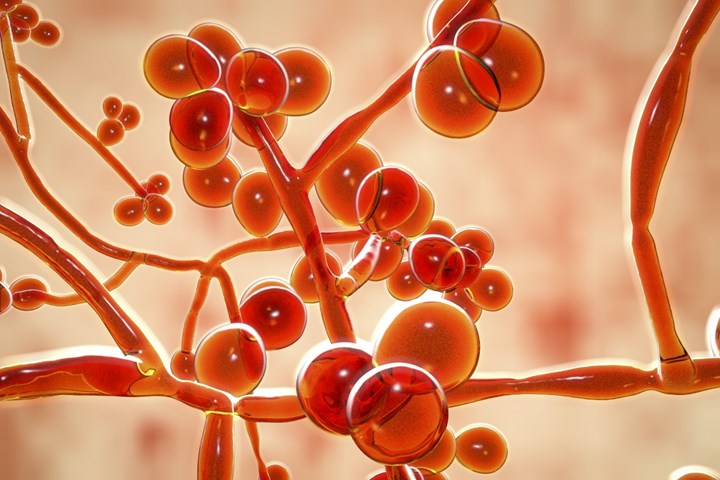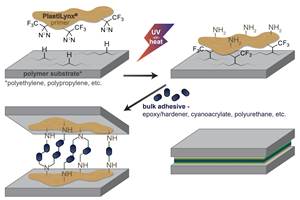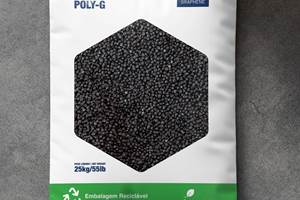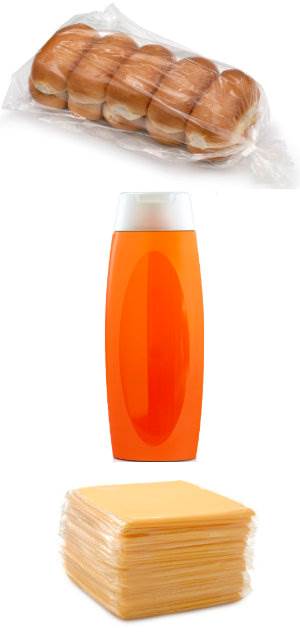Antimicrobial Based on Elemental Zinc Shown to be Effective Against Super-Resistant Fungus
Parx Materials’ Seniconcentrate technology now shown to be effective against super-resistant fungus by 87%.
We have previously reported on Dutch/Italian technology start-up Parx Materials and its patented Saniconcentrate antimicrobial based on elemental zinc which was first shown to allow plastics manufacturers to create self-sanitizing products with an antibacterial property of up to 99% within 24 hours, as determined according to ISO22196 with gram positive Staphylococcus aureus and gram negative Escherichia coli bacteria.
Saniconcentrate was touted as a breakthrough option for antimicrobials without biocides for applications like touch surfaces in public areas, medical devices or food contact applications. Moreover, last year this additives technology was shown to reduce Covid-19 virus without harmful toxins on surfaces by up to 99% in 24 hours. Now, the company says this technology has been shown to be 87% effective against super-resistant fungus, which is seen by some as the next global health threat.

Candida auris is one example, as it is multidrug-resistant and can persist on surfaces, despite disinfection. Since it was first identified in Japan in 2009, cases of Candida auris have emerged across the world almost simultaneously. The super fungus has already been labelled a serious global health threat by national health protection agencies like the United States’ Centers for Disease Control and Prevention (CDC).
It has caused infections of wounds, ears and the bloodstream, and experts are uncertain whether it also causes infections in the lungs or bladder. Because Candida auris often doesn’t respond to anti-fungal drugs, 30% to 60% of patients infected with it will likely die—particularly if their immune systems have been compromised by other risk factors like Covid-19.
According to Parx Materials, Candida auris is made more dangerous by the fact it’s easily misidentified as another Candida strain, unless special tests are carried out in a laboratory. This creates the perfect circumstances for outbreaks in healthcare settings, such as hospitals or nursing homes. There have been several high-profile examples that have led to scores of infections.
Candida auris is spread from person-to-person, or through contact with contaminated surfaces. Examples of the latter include high-touch surfaces like bed rails, windowsills or shared mobile equipment like blood pressure cuffs, axillary thermometers or even nurses’ carts. It can also spread through invasive lines or tubes, like urinary catheters and tracheostomy tubes, which are often the point of entry into the patient’s body.
Not only is Candida auris easy to catch, it is also very hard to kill. Parx Materials notes that few products on the market have proven able to tackle the super fungus. As such, it lingers in hospital rooms, sinks and drains. In one case, a hospital even had to destroy its ceiling and floor tiles to get rid of a particularly nasty infection. The company’s Saniconcentrate is said to add an extra level of protection when regular practices aren’t enough--like cleaning and disinfection, rigorous handwashing and appropriate care of medical equipment and devices. The reduction in fungus made possible by the plastic additive may be the difference that’s needed to prevent Candida auris from forming a biofilm. Biofilm makes the fungus grow and multiply more quickly, and it becomes almost impossible to eradicate.
The additive is homogenously incorporated into plastics to create an immune system inherent to the material that doesn’t fade with time or use. The additive is also biocompatible, safe for use in the human body. Or it can be manufactured into a non-woven textile. Its applications include many of the areas where Candida auris is most likely to spread. This includes touch surfaces, invasive tubes or articles and personal protective equipment (PPE).
Related Content
Surface-Activating Primer for Polyolefins and Fluoropolymers
XlynX Materials’ PlastiLynx is designed for use with low-surface-energy polymers for improved bonding and printing.
Read MoreGerdau Graphene Launches “First” Graphene-Enhanced PE Additive Masterbatch for Extruded Packaging and More
The company has also partnered with conglomerate Sumitomo Corp. for distribution of its graphene-enhanced masterbatches in Japan.
Read MorePFAS-Free Processing Aid for Blown Film Extrusion
Ampacet’s new processing aid said to perform as well as fluoro-based PPAs in blown film.
Read MoreCrosslinking Process Promises Thinner, Higher-Performance PE Films
Technology combines UV curing system with photo initiator promoter masterbatch.
Read MoreRead Next
Advanced Recycling: Beyond Pyrolysis
Consumer-product brand owners increasingly see advanced chemical recycling as a necessary complement to mechanical recycling if they are to meet ambitious goals for a circular economy in the next decade. Dozens of technology providers are developing new technologies to overcome the limitations of existing pyrolysis methods and to commercialize various alternative approaches to chemical recycling of plastics.
Read MoreTroubleshooting Screw and Barrel Wear in Extrusion
Extruder screws and barrels will wear over time. If you are seeing a reduction in specific rate and higher discharge temperatures, wear is the likely culprit.
Read More

















.png;maxWidth=300;quality=90)






